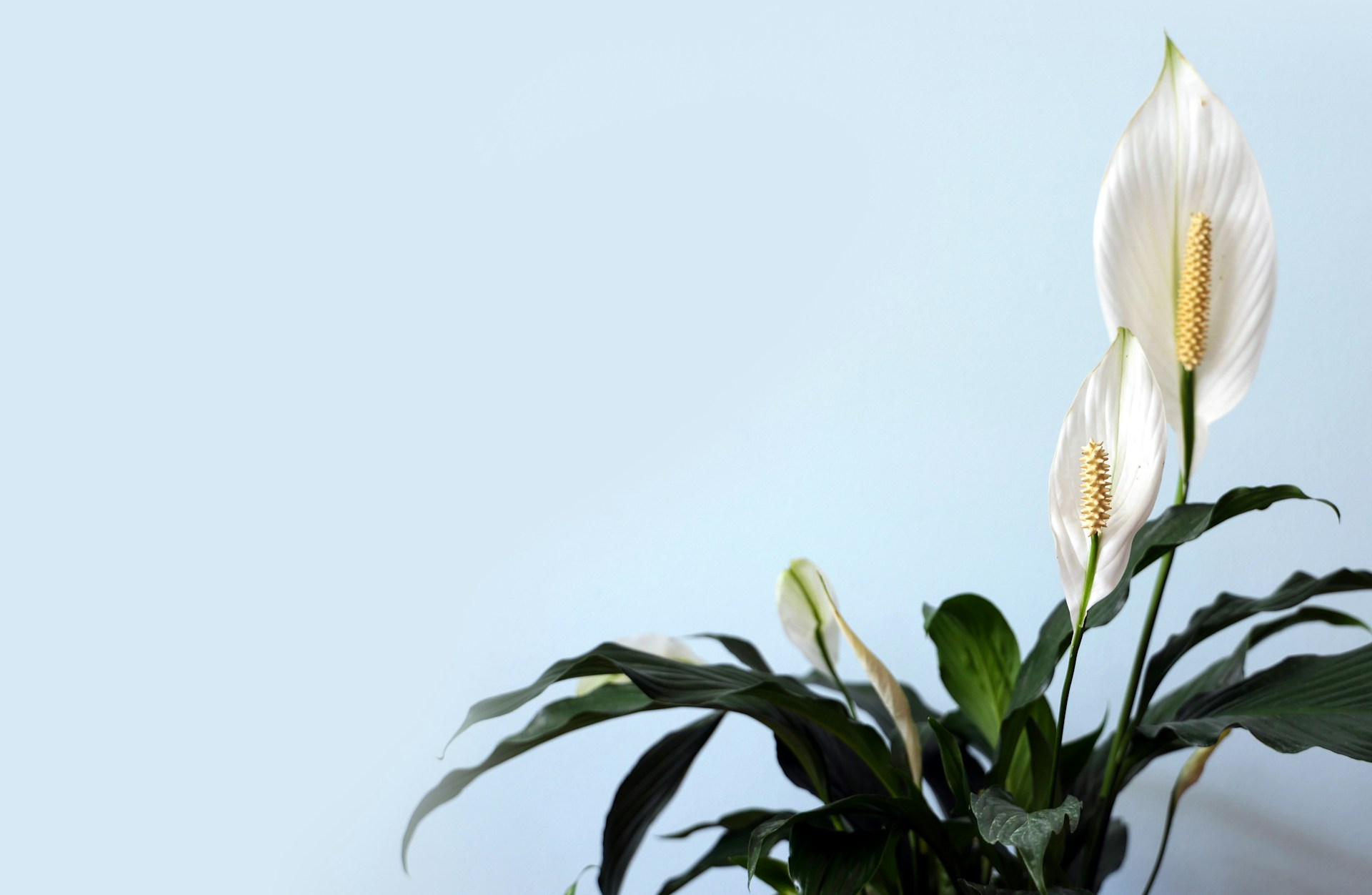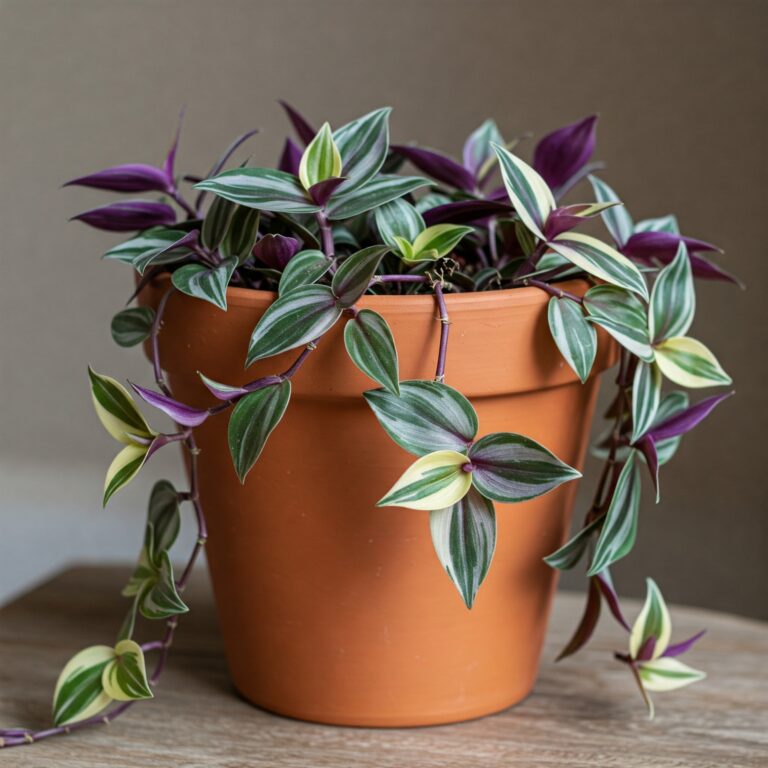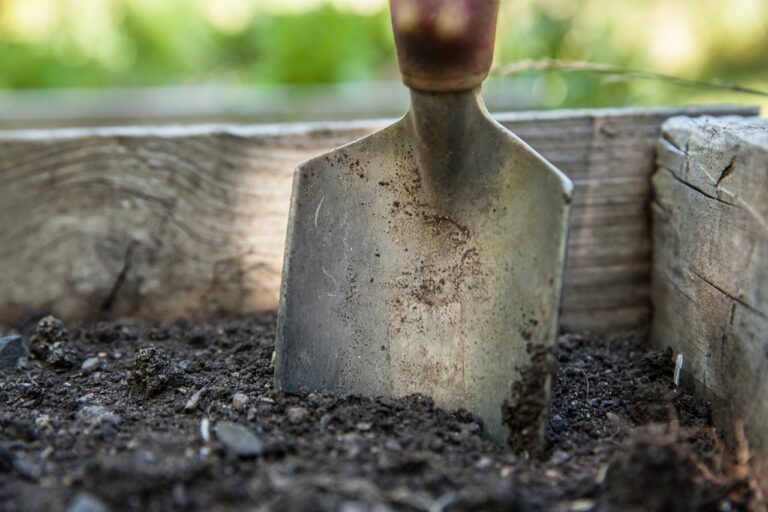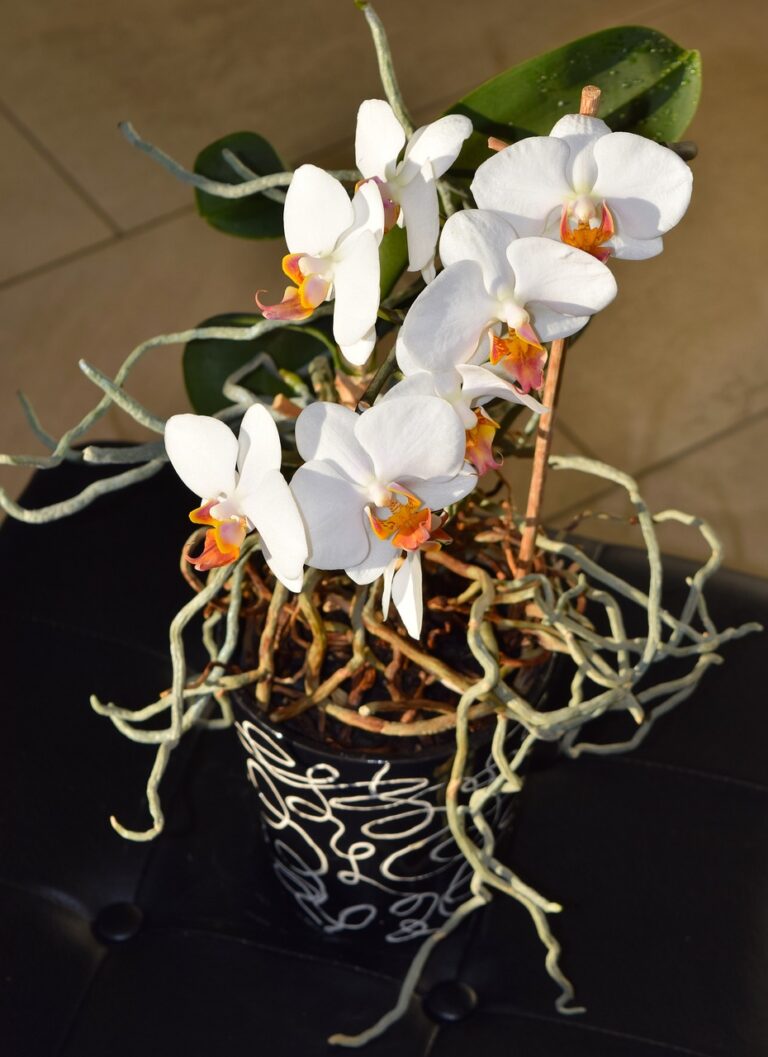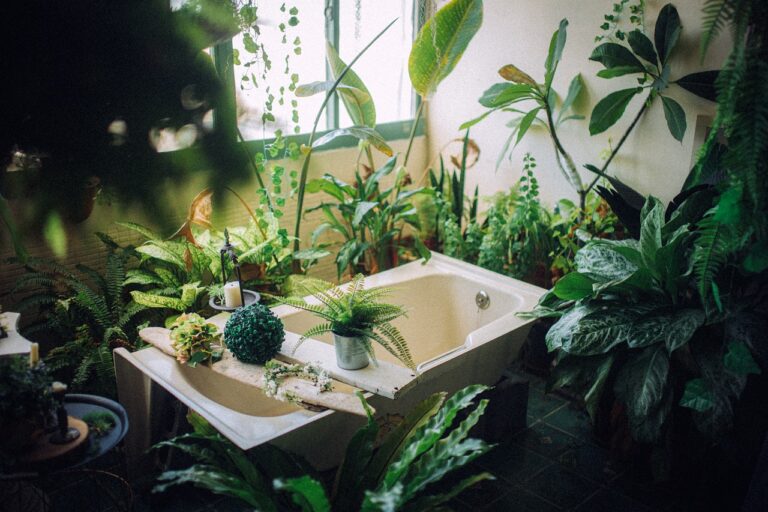If you’re looking for a low-maintenance indoor plant that adds a touch of elegance to your home or office, the Domino Peace Lily is a great option. The plant is known for its striking white flowers and glossy green leaves.
One of the advantages is that it’s easy to care for Domino Peace Lily. You only need to meet its required growing conditions. It includes placing it in a bright, indirect light and keeping the soil moist but not waterlogged. You’ll also want to fertilize it occasionally and keep an eye out for pests and diseases.
This article will provide a Domino Peace Lily care guide to help you grow a beautiful plant at home. Once you understand how to care for the plant, you can give it the attention and care it needs to thrive.
Domino Peace Lily Care Guide.
Since this is one of the easiest plants to care for, you don’t have to worry about doing most of the work. If you provide it with proper care and attention, you won’t have to worry about any plant problems.
Here are the requirements you need to care for Domino Peace Lily.
Lighting
When caring for your Domino Peace Lily, lighting is an important factor to consider. These plants thrive in bright, indirect light but can also tolerate low-light conditions.
Indirect Light
Ideally, you should place your Domino Peace Lily in a spot that receives bright, indirect light. This means that the plant is not directly in the path of the sun’s rays, but still receives plenty of light. A north-facing window is an excellent location for your peace lily, as it will receive bright, indirect light throughout the day.
If you don’t have a north-facing window, you can still provide your peace lily with indirect light by placing it near a window shaded by a sheer curtain or a tree outside. You can also place the plant a few feet away from a south-facing window, where it will receive bright, indirect light.
Low Light
If you don’t have access to bright, indirect light, don’t worry – your Domino Peace Lily can still thrive in low-light conditions. These plants are known for their ability to tolerate low light, making them an excellent choice for homes and offices with limited natural light.
In low light conditions, your peace lily will grow more slowly and may produce fewer flowers. However, it will still produce new leaves and remain healthy with proper care. If you’re placing your peace lily in a low-light area, make sure to avoid direct sunlight, as this can scorch the leaves.
Watering
When it comes to watering your Domino Peace Lily, it’s important to strike the right balance. Over-watering can lead to root rot and other issues, while under-watering can cause the plant to wilt and die. Here are some tips to help you get it right.
Frequency
The frequency of watering your Domino Peace Lily will depend on a few factors, such as the size of the pot, the amount of light and humidity in the environment, and the time of year. As a general rule, you should water your plant when the top inch of soil feels dry to the touch. This may mean watering once a week in the summer and once every two weeks in the winter.
Amount
When watering your Domino Peace Lily, give it enough water to thoroughly moisten the soil without drowning the roots. A good rule of thumb is to water until water starts draining out of the pot’s bottom. If you need to figure out how much water to give your plant, use a moisture meter or stick your finger in the soil to check the moisture level.
One thing to keep in mind is that the Domino Peace Lily is sensitive to the chemicals found in tap water, so it’s best to use distilled or filtered water if possible. You can also let tap water sit out for a day or two to let the chlorine and other chemicals evaporate before watering your plant.
Temperature and Humidity
Ideal Temperature
The ideal temperature for your Domino Peace Lily is between 65°F to 80°F (18°C to 27°C). This temperature range is comfortable for most people and also perfect for your plant. Your plant may suffer if the temperature drops below 60°F (15°C). On the other hand, if the temperature rises above 85°F (29°C), your plant may start to wilt.
Ideal Humidity
The ideal humidity level for your Domino Peace Lily is between 40% to 60%. If the humidity level is too low, your plant may suffer from dry air, which can lead to brown tips on the leaves. If the humidity is too high, your plant may become susceptible to fungal diseases.
To maintain the ideal humidity level, use a humidifier or place a tray of water near your plant. You can also group your plants together, which will create a microclimate with higher humidity levels.
It is important to note that temperature and humidity levels can vary depending on the location of your plant. For example, if your plant is near a drafty window, it may experience cooler temperatures and lower humidity levels. Monitor the temperature and humidity levels regularly to ensure your plant is thriving.
Propagation
If you want to propagate your Domino Peace Lily, you have two options: division or cuttings.
Division
Dividing your plant is the easiest way to propagate it. You can do this when you repot your plant, or you can do it separately. Here’s how to do it:
- Remove the plant from its pot and gently shake off any excess soil.
- Look for natural divisions in the plant. These are areas where the plant has naturally separated into smaller sections.
- Use a clean, sharp knife to cut through the roots and separate the sections.
- Repot the new sections in fresh soil.
Cuttings
If you don’t want to divide your plant, you can take cuttings instead. Here’s how to do it:
- Choose a healthy stem with several leaves.
- Use a clean, sharp knife to cut the stem just below a node (where the leaf meets the stem).
- Remove the lower leaves from the stem, leaving only a few at the top.
- Dip the cut end of the stem in the rooting hormone.
- Plant the stem in a pot filled with moist soil.
- Cover the pot with a plastic bag to create a humid environment.
- Keep the soil moist and wait for the cutting to root.
Propagation is a great way to create new plants and expand your collection. You can easily propagate your Domino Peace Lily with a little patience and care.
Pruning
Pruning is an essential part of Domino Peace Lily care. It helps to promote healthy growth and prevent diseases. Here are some tips on how to prune your Domino Peace Lily:
When to prune
You should prune your Domino Peace Lily when you notice dead or yellow leaves, or it looks too bushy. You can prune the plant at any time of the year, but it is best to do it during the growing season, spring to fall.
How to prune
You will need a clean pair of scissors or pruning shears to prune your Domino Peace Lily. Start by removing any dead or yellow leaves at the base of the plant. Cut the leaves as close to the soil as possible, but be careful not to damage the stem.
Next, look for any stems growing too tall or too close together. Cut these stems off at the base of the plant to promote healthy growth.
Tips for pruning
- Always use clean scissors or pruning shears to prevent the spread of diseases.
- Do not remove more than one-third of the plant at a time.
- If you want your Domino Peace Lily to grow taller, prune the lower leaves to encourage vertical growth.
- If you want your Domino Peace Lily to grow bushier, pinch off the tips of the stems to promote lateral growth.
Fertilizing
Fertilizing provides essential nutrients that the plant needs to grow and develop. Here are a few things to keep in mind when fertilizing your plant:
When to Fertilize
You should fertilize your Domino Peace Lily every two to four weeks during the growing season, typically from spring to fall. During the winter months, you can reduce the frequency of fertilization to once a month.
What Type of Fertilizer to Use
When choosing a fertilizer, look for a balanced, water-soluble fertilizer with equal amounts of nitrogen, phosphorus, and potassium. You can also use a specialized houseplant fertilizer. Avoid using fertilizers that are high in nitrogen, as this can cause the leaves to become dark green and reduce flowering.
How to Apply Fertilizer
Before applying fertilizer, make sure the soil is moist. Dilute the fertilizer according to the manufacturer’s instructions and apply it directly to the soil. Avoid getting fertilizer on the leaves, as this can cause burning. After applying fertilizer, water the plant thoroughly to help distribute the nutrients evenly.
Signs of Over-Fertilization
Over-fertilizing your Domino Peace Lily can be harmful to the plant. Signs of over-fertilization include brown leaf tips, yellowing leaves, and stunted growth. If you notice any of these signs, reduce the frequency of fertilization or use a weaker concentration of fertilizer.
Pest and Disease Control
Taking care of your Domino Peace Lily requires monitoring for pests and diseases. Here are some common issues you may encounter and how to deal with them:
Pests
- Spider mites: These tiny pests can cause yellowing leaves and webbing on the plant. You can wash them off with a strong stream of water or use an insecticidal soap.
- Mealybugs: These white, cotton-like insects can suck the sap from your plant and cause stunted growth. You can remove them with a cotton swab dipped in rubbing alcohol or use an insecticidal soap.
- Scale insects: These pests can look like small bumps on the leaves and stems of your plant. They can be treated with an insecticidal soap or with a cotton swab dipped in rubbing alcohol.
Diseases
- Root rot: Overwatering can cause your plant’s roots to rot, leading to yellowing leaves and wilting. To prevent root rot, ensure your plant is in well-draining soil and allow the top inch of soil to dry out before watering again.
- Leaf spot: This fungal disease can cause brown spots on your plant’s leaves. Remove any affected leaves and reduce the humidity around your plant to prevent further spread.
- Bacterial soft rot: This bacterial disease can cause the leaves and stems of your plant to become mushy and slimy. Remove any affected parts of the plant and make sure to avoid overwatering.
